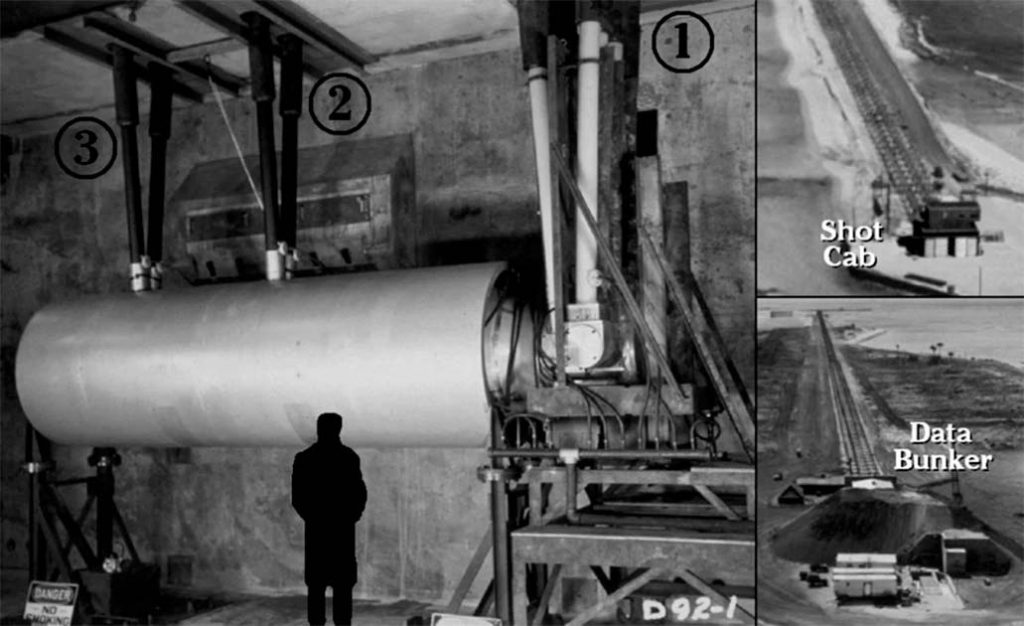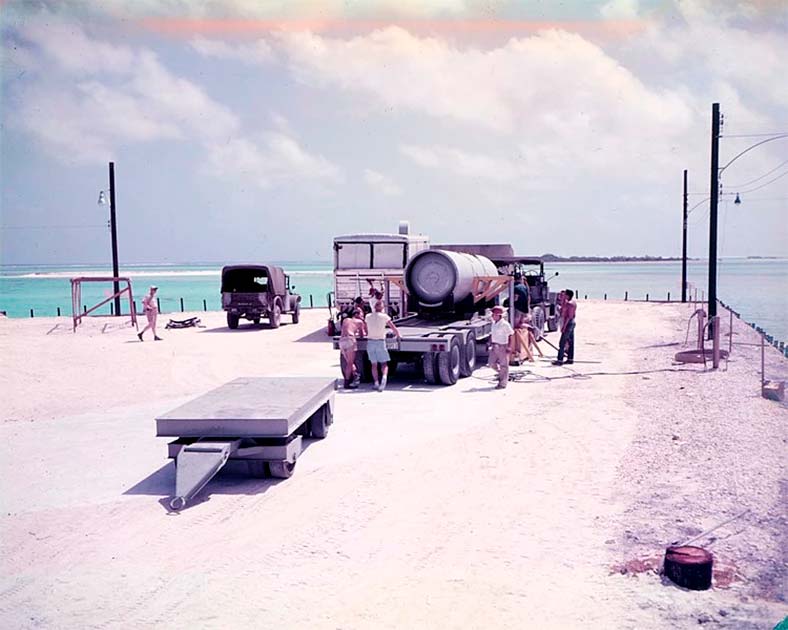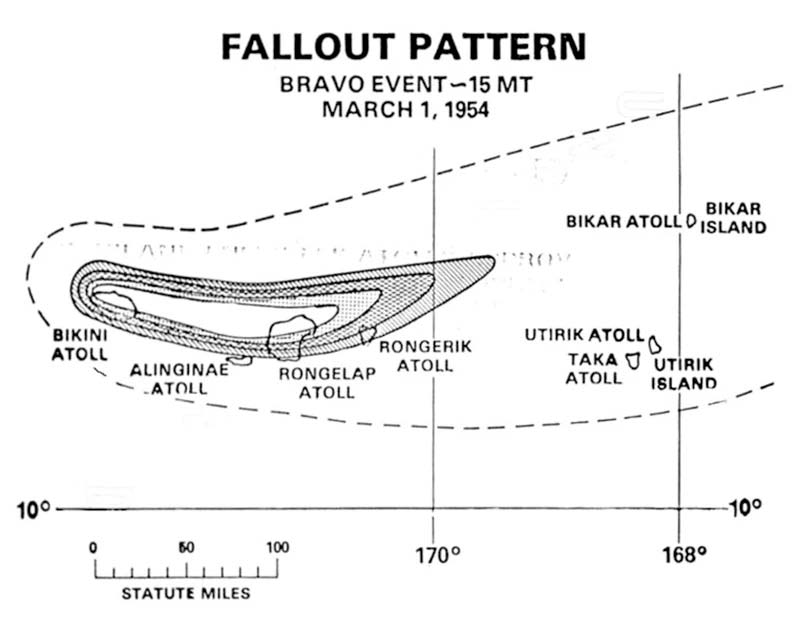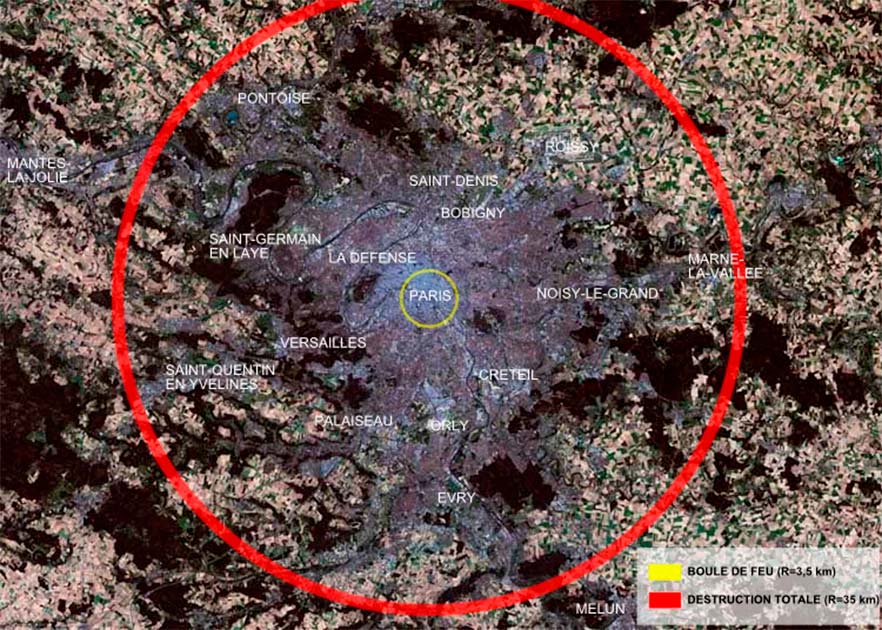The Castle Bravo test was a nuclear weapons experiment that went disastrously wrong, unleashing a destructive force that dwarfed all earlier nuclear explosions. Conducted by the United States on March 1, 1954, at Bikini Atoll in the Marshall Islands, the test was part of a bold and dangerous effort to develop and refine America’s nuclear weapons capabilities during the height of the Cold War.
Its goal was to test a new hydrogen bomb design, demonstrate American nuclear superiority, and send a message to the Soviet Union and other potential adversaries. But what happened next was beyond anyone’s worst nightmares, with the test unleashing a fireball of unimaginable power that had devastating and long-lasting consequences for the people of the Marshall Islands, the United States, and the world.
How did the Americans get their calculations so wrong?
What was the Castle Bravo Test?
The problem with unleashing any new military technology on the world is that it starts a deadly game of one-upmanship. The US may have been the first nuclear power, but it wasn’t the last. Rather than creating the ultimate weapon that ensured America’s safety, the creation of nuclear weapons started an arms race and America knew it had to stay in the lead.
Not long after America became a nuclear power the Russians, and then the British, followed suit. In the following years, the race was on to build bigger, more powerful, and more efficient bombs. This all led to the Castle Bravo test, the code name assigned for the first test of a new type of hydrogen bomb, developed by the United States in 1954.
Carried out on March 1, 1954, at Bikini Atoll in the Marshall Islands in the Pacific Ocean the Americans were testing a new type of nuclear bomb, which they called the “Shrimp”. Instead of using plutonium or uranium, like earlier nukes, the Castle Bravo bomb used lithium deuteride as the fusion fuel. This new fuel allowed the bomb to release much more energy than earlier bombs.
It was the first American thermonuclear bomb, more commonly known today as a hydrogen bomb, or H-bomb. Unlike the nukes which had come before it, the hydrogen bomb did not rely solely on fission reactions to release energy. Instead, it used a combination of fusion and fission to get the job done.

This was all designed to create a much larger yield than earlier bombs had managed. The bomb was designed to produce a yield of 5 megatons (around 1,000 times more powerful than the bomb dropped at Hiroshima). The Castle Bravo test bomb was also much larger and heavier than earlier American nukes. It weighed over 10,000 pounds (4 and a half tons) and was over 14 feet (4 meters) long.
- Secrets of the Polygon: The Soviet Nuclear Testing Grounds
- Wartime Sabotage in a Neutral Country? The Black Tom Explosion
Overall, the Castle Bravo test bomb was a significant leap forward in American nuclear weapons technology, both in terms of design and destructive capabilities. It was, however, a long way away from perfect. There were serious design flaws that would lead to tragic, unintended consequences.
What was it Supposed to Achieve?
The Castle Bravo test had several objectives. The most obvious one was to test the new hydrogen bomb design detailed above. The Americans wanted to gather data on the bomb’s effectiveness and assess its potential use in military applications.
It was also used to gather data on thermonuclear reactions in general. Scientists wanted to learn more about the behavior of thermonuclear reactions, both fission, and fusion. It was hoped this data would not just help refine future American weapons, but also improve our understanding of the physics of nuclear reactions for other uses.

The final purpose of the test was to show the world, especially the Russians, what the US was capable of. The test was meant to be a showcase of America’s nuclear capabilities. By demonstrating the raw power of the new hydrogen bomb design, the United States hoped to strengthen its position in the arms race and deter potential enemies from starting nuclear wars.
Big Bada Boom
Unfortunately, the bomb worked a little too well. The Americans had predicted a 5-megaton yield, but a miscalculation meant it created a yield 3 times stronger, making it the largest nuclear explosion ever conducted by the United States.
Scientists working on the bomb had underestimated the amount of energy that would be released when the lithium-7 isotope in the bomb’s fuel was bombarded with neutrons and fused with the deuterium (a heavy isotope of hydrogen). The problem was that the designers thought the lithium-7 would act the same as pure lithium, which produces very little energy when fused with deuterium.
In reality, as we now know lithium-7 produces a huge amount of energy when fusing. This resulted in a much, much larger explosion than expected.
On top of this, the designers underestimated how much tritium (another hydrogen isotope) would be produced during the fusion reaction. This extra tritium reacted with the fusion fuel, increasing the bomb’s yield even further. While one might think producing a bomb much more powerful than expected would be a boon, the test came with major consequences.
An Ecological Catastrophe
The Castle Bravo test came with dire consequences, both for the people living in the Marshall Islands and for the wider world.
- Whoops! How did the US Misplace Six Nuclear Bombs?
- The NS Savannah: Whatever Happened to Nuclear Powered Civilian Ships?
One of the worst effects of the bomb was the copious amounts of radioactive fallout it produced. This fallout quickly spread over a wide area and exposed people to elevated levels of radiation.
Residents of the islands experienced radiation sickness including nausea, vomiting, hair loss, and burns. The long-term effect of this was a larger than normal number of people developing cancer and other radiation-related illnesses.

The environment also took a massive hit. Besides the damage done by the bomb’s blast wave, miles of soil and water were irradiated and contaminated, taking its toll on local marine life. The fallout even spread to other parts of the Pacific Ocean, going as far afield as the US and Japan.
Unsurprisingly, all this damage, and the bungling of the test itself, had political consequences. There were protests and outrage against the test both in the United States and abroad. Many people called for an end to nuclear weapons testing, and the incident became a catalyst for the global anti-nuclear movement.
If that wasn’t bad enough, the test also failed in deterring America’s enemies. While the test did succeed in demonstrating the United States’ nuclear capabilities and strengthened its position in the Cold War arms race, it also prompted other countries, especially the Soviet Union to accelerate their own weapons programs.
As a result of the Castle Bravo test, and tests like it, countries kept testing bigger and bigger bombs. This culminated in the Russian Tsar bomb, the largest nuclear device ever detonated.

When tested in 1961 the Tsar bomb produced a 50-kiloton yield (much, much more powerful than the Castle Bravo bomb) and the plane which dropped the bomb, flying as high and as fast as it could barely outran the blast. It could have been even worse, as there were early plans to fir the bomb with a 100-kiloton warhead.
Nuclear Destruction
The Castle Bravo test was a significant event in the history of nuclear weapons testing, with wide-ranging and long-lasting consequences for the people of the Marshall Islands, the United States, and the world. While the test achieved some of its intended objectives, its unintended consequences highlighted the potential dangers and risks associated with nuclear weapons, and prompted renewed calls for arms control and disarmament.
The Castle Bravo test teaches us that as we race to make scientific and technological advancements, we must do so responsibly. The need for advancement must be weighed against ethical considerations and a sense of responsibility toward the safety and well-being of the people we share our planet with. When corners are cut, and advancements are rushed, they result in tragedies like this.
Top Image: the first moments of the Castle Bravo detonation, the largest explosion in US history. Source: US Department of Energy / Public Domain.